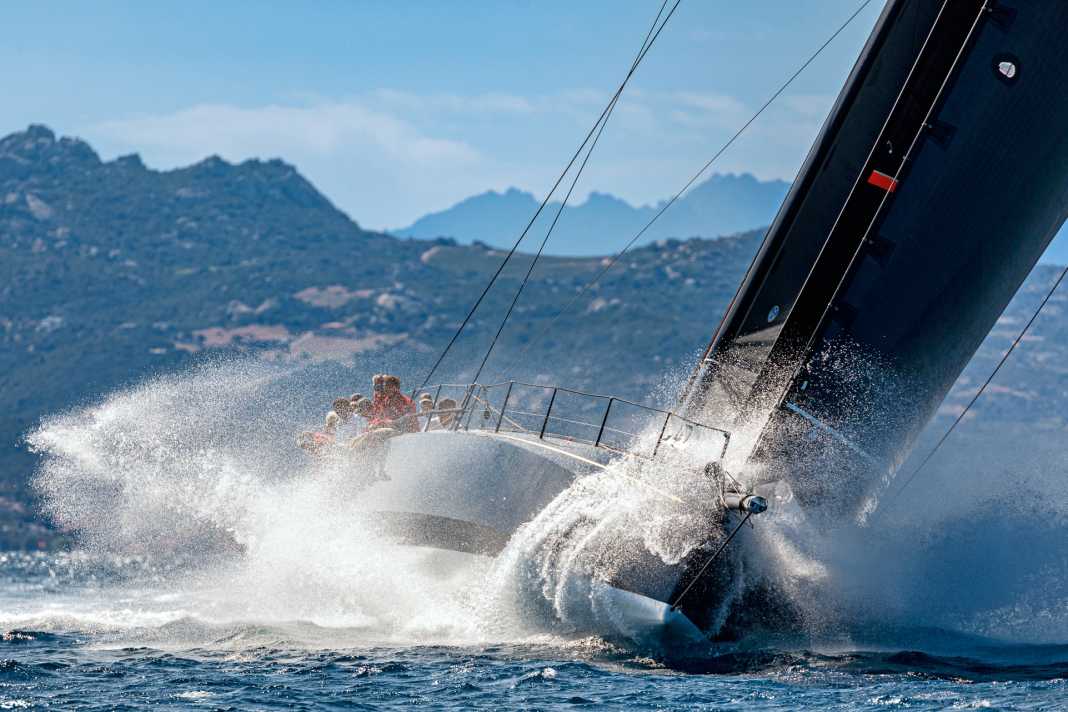





Setting the mainsail takes time. First of all, two men in climbing harnesses have to be pulled halfway up to the first spreader. Their task there is to attach the enormous headboard to the mast slides. They then have to tension the upper continuous battens while the almost 250 square metre, pitch-black mainsail slowly stretches towards the top of the mast.
The manoeuvre is overseen by American Ken Read, who stands casually leaning against the railing in the stern. The exceptional sailor and President of North Sails is on board as tactician for the Maxi Yacht Rolex Cup in Porto Cervo, Italy, and is to coach the newly assembled team on the "My Song" with his enormous experience in handling large regatta yachts. His instructions to the predominantly Italian crew are short, precise and unambiguous.
The acceleration of the ClubSwan is brutal
On the training day before the first mission, there is a palpable sense of professionalism on board the brand new ClubSwan 80. Work is carried out calmly, deliberately and without any hectic rush. Everyone knows what needs to be done, because all of the 15-strong crew are paid professionals and have the relevant track records on this type of large racing yacht. If you don't know exactly where to go and how, it's better to stay out of it. So when the YACHT reporter asks whether he should lend a hand with the manoeuvres, he is initially rejected. "It's best if you just sit in the pushpit and hold on tight," is the trivial instruction from Master Read.
Juan Kouyoumdjian's design is uncompromisingly focussed on performance. The potential is enormous
After around 30 minutes, the mainsail is set. Owner and helmsman Pier Luigi Loro Piana takes the helm and drops to half wind. The genoa is also set. The acceleration is simply brutal. The large coloured digital displays on the mast immediately show 17 knots of speed with roughly the same amount of wind, and the sails don't even seem to be trimmed properly yet.
The huge gennaker is set and hauled in within seconds
Then comes the short, concise command from Read: "Hoist!" In the fastest gear, one of the two huge electric ceramic winches on the companionway pulls the giant gennaker from a hatch in the foredeck to the top with frighteningly violent force. When the large sail unfurls with a tremendous stroke, the ship knows only one direction: forwards! The display shows 23, 24, 25 knots, which is more than 45 kilometres per hour. On the water, that's its insane speed. And even the generously motorised escort boat struggles to keep up.
After a few impeccably executed gybes, the gennaker is pulled in again, literally. Around 700 square metres of fabric are pulled through a hatch in the foredeck into a sock that extends below deck through the entire boat from bow to stern. In just five seconds, there is nothing left to see of the huge bubble on deck. On a dinghy, the process takes barely less time.
The owner must steer the ClubSwan himself at regattas
Back at the cross, the "My Song" manages eleven knots of speed in constant conditions. Because on yachts of this calibre and potential, only and exclusively the apparent wind angles are relevant to performance, steering is also particularly demanding. Owner Pier Luigi Loro Piana is regarded as a very competent and experienced helmsman, but is nevertheless happy to have Ken Read whispering good tips in his ear as his helmsman.
"Pigi", as the dazzling fashion czar from Italy is known by his team, not only wants to and can steer, he also has to. On short regatta courses permanently, on the long distance at defined times, during the start phase and when crossing the finish line. This is required by the regulations of the International Maxi Association IMA as well as the rules that have already been drawn up for the ClubSwan 80 as a standardised class.
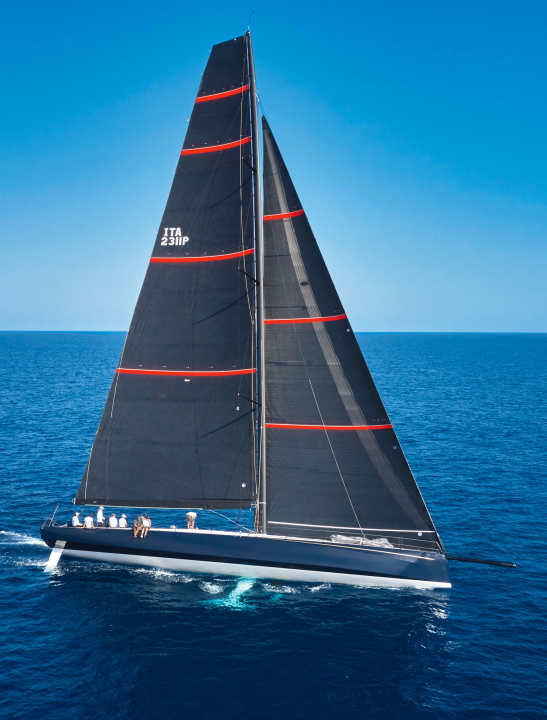
The ClubSwan 80 is built in Italy from carbon fibre
Standardised class? Yes, at least that's what is planned and in preparation. Nautor Swan is positioning its new 80-foot racer between the established ClubSwan 50, which has already successfully established itself as a one-design class with an impressive number of participants, and the ClubSwan 125. The breathtaking sailing monster and record-breaker "Skorpios", the flagship of the series, is also already in use.
Like the "My Song", the ClubSwan 80 yachts are not built at the Nautor Swan shipyard in Finland, but in cooperation with the carbon fibre specialists at Persico Marine in Italy. The hull, deck, floor assembly, bulkheads and hull reinforcements as well as the keel and rudder blades are made in the high-tech forge near Bergamo from carbon fibre with epoxy resin, partly with vacuum infusion, partly using prepregs, pre-impregnated laminate fabrics. There is no better, lighter and stiffer way to build boats today.
Pier Luigi Loro Piana was deeply involved in the development of his "My Song". His wish for Nautor Swan at the concept briefing was: a yacht that would not only allow him to compete successfully in the exclusive maxi regatta circuit, but that he could also sail himself, for example with his family, friends and acquaintances as well as a small regular crew for professional support. However, "Pigi" shies away from compromises and wants to be able to consistently separate the two topics on his dream boat. In other words, a racer capable of winning on the one hand and a luxurious cruising boat on the other. But how is that supposed to work?
Comfortable as a cruiser, uncompromising in sport mode
The answer comes from Nautor Swan in the form of modular installation and extension components on and below deck. The interior of the "My Song" is very comfortable in cruising mode. With an elegant owner's area, comfortable guest cabins, toilet rooms with showers and a generously installed galley. On deck in the cockpit there are seating areas, cockpit tables, a sprayhood and a large sunbathing area. If you like, this version of the "My Song" is a kind of XXL weekender.
However, if the team plans to take part in a regatta in the near future, all amenities relating to luxury and enjoyment must give way to the uncompromising need for sport and ultimate performance. This means that all living facilities, furniture, berths, storage space, the entire kitchen and parts of the bathrooms have to be removed from the boat. The parts are manufactured in such a way that when dismantled they fit either through the hatch in the foredeck or through the companionway. The cockpit is also cleared. The canopies and tables are removed, as is everything else that is not absolutely necessary for the regatta.
The conversion to a racer takes two days
It takes a five-man Shore team two full days to convert a performance cruiser into the ultimate regatta yacht and vice versa. During this time, components with a total weight of around one tonne have to be dismantled and loaded onto a lorry or reinstalled. And, of course, if the "My Song" is to be prepared for cruising, the inside of the boat has to be completely cleaned out and desalinated. Because in regatta mode, large quantities of water always get into the boat through the gennaker's recovery hose alone.

Canting keel and canard save weight
Draught is a relevant issue for yachts of this size. The Club-Swan 80 is fitted with a canting keel. This means that the slender fin with the torpedo-shaped ballast bomb weighing over seven tonnes is swivelled hydraulically 45 degrees to windward as required. The greater leverage increases the righting moment. The tilting keel can therefore be shorter than a fixed keel with the same performance and also requires less ballast. This is one of the reasons why the "My Song", with a total weight of 19.2 tonnes in regatta mode, is lighter than many other comparable racing yachts. Although the draught is still an impressive 4.75 metres, this is still enough to be able to call at most larger ports in the Mediterranean without any problems when cruising.
However, if the keel is fully swung out to windward when heeling, the boat lacks an effective lateral surface under water. A so-called canard, a type of additional centreboard installed in front of the keel, is then used to counteract the drift. On the ClubSwan 80, the profile can be raised and lowered hydraulically depending on the heel and position of the canting keel. And the fin can be adjusted six degrees to either side along the vertical axis. This is intended to generate additional lift and literally pull the yacht to windward with the resulting force.
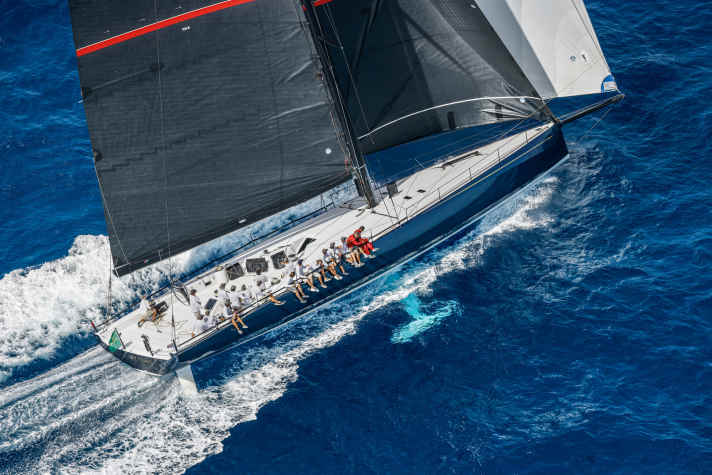
The ClubSwan is exclusively electronically controlled
Muscle men are hardly needed on board the "My Song". The seven huge winches in the cockpit are electrically operated, and the canting keel and canard are adjusted using extensive and complex hydraulic systems for fast and powerful movements. In short, all the functions for trimming the sails and the underwater appendages can only and exclusively be controlled at the touch of a button. There are no winch cranks on board, nor are there any grinders. The trimmers even have pushbuttons for the transversely recessed centre of gravity adjustments in the deck.
Of course, these simplifications are also associated with increased energy consumption. This is why the large built-in diesel engine runs continuously while sailing and supplies power as a generator not only for the electric drives of the winches, but also for the extensive hydraulic systems. After all, the huge cylinder for the tilting keel needs at least 500 bar of pressure to be able to swivel the ballast fin upwards. A small but noteworthy detail of the propulsion system: the propellers and shaft can be completely retracted into the ship when sailing thanks to a sophisticated mechanism. A cover plate then seamlessly closes the opening in the hull.
The owner tragically lost his last ship
Owner Pier Luigi Loro Piana tragically lost his last ship, also named "My Song", four years ago. Back then, the 130-footer built by Baltic Yachts in Finland fell off the freighter during a transatlantic crossing. The reason for the accident was probably a collapsed transport rack on deck. The almost forty-metre-long full-carbon racer went overboard off Menorca and sank. Although the yacht was later salvaged, it had to be declared a total loss. "I lost my love that day," says the affable fashion mogul and multimillionaire from Italy, who spends a large part of his life on board ships.
Now "Pigi" is downsizing with his ClubSwan 80. "I'm really happy with my new little toy," says the sailing enthusiast, and without any mischief. In the meantime, success has also been achieved. In May 2023, the "My Song" won the IMA Maxi European Championships in Sorrento near Naples against 26 competitors between 60 and 80 feet in length - according to calculated time.
Some may ask how much a yacht like the "My Song" might have cost - just out of curiosity, of course. But the proverbial gentleman as well as the shipyard and the owner are keeping quiet about this. The predecessor is said to have cost 33 million US dollars. The new one will probably be somewhat cheaper.
Technical data ClubSwan 80 "My Song"
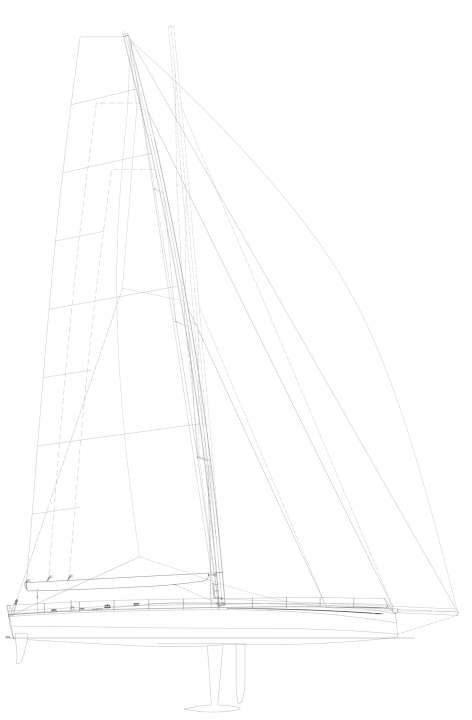
- Design engineer:Juan Yacht Design
- Interior design: Nauta Design
- Torso length: 23,99 m
- Width: 6,00 m
- Draught (canting keel): 4,75 m
- Weight: 19,2 t
- Ballast/proportion: 7,3 t/38 %
- Sail area on the wind:447,0 m²
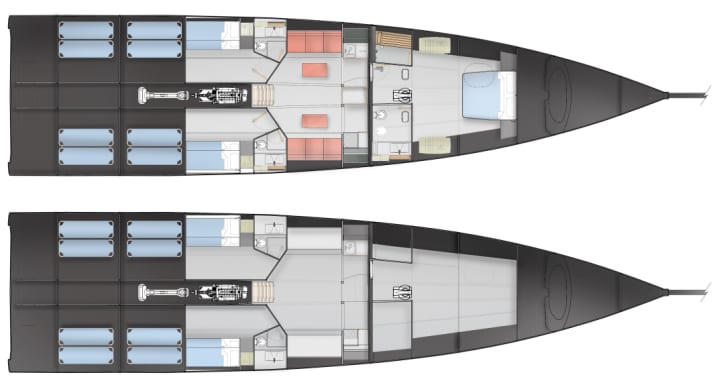
The two layouts on the left illustrate what goes on board for touring and what comes off for the regatta. For the conversion, furniture with a total weight of around one tonne is manoeuvred through the hatches and through the companionway from or into the ship. The process takes around two whole days.

